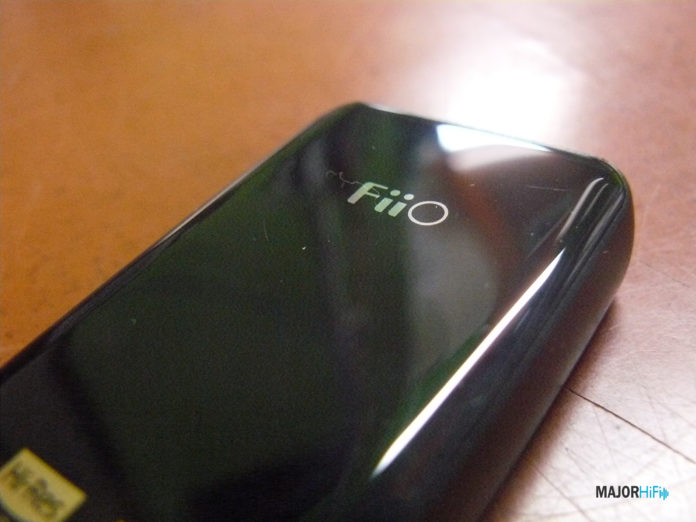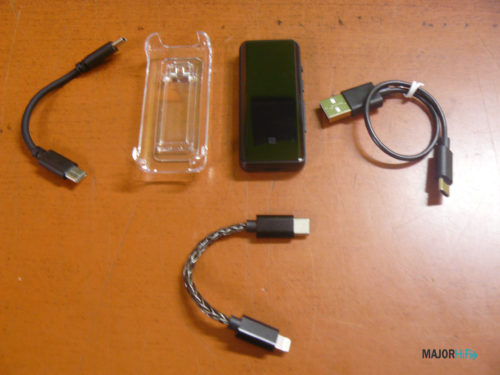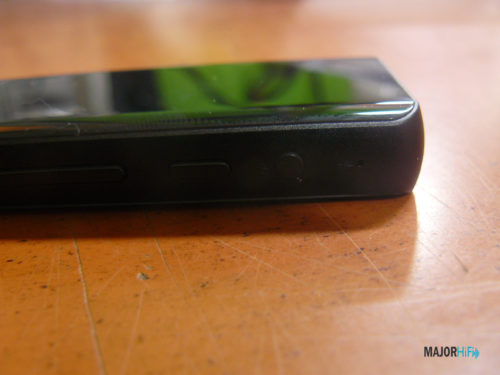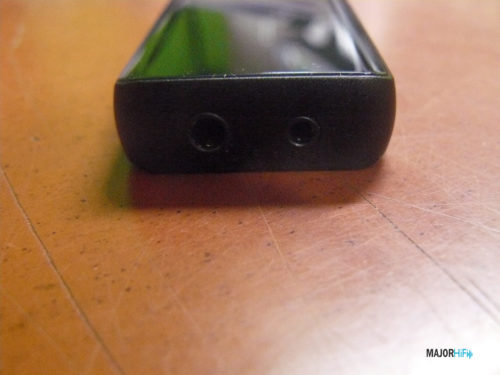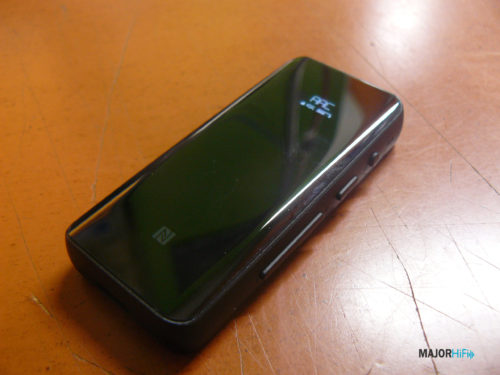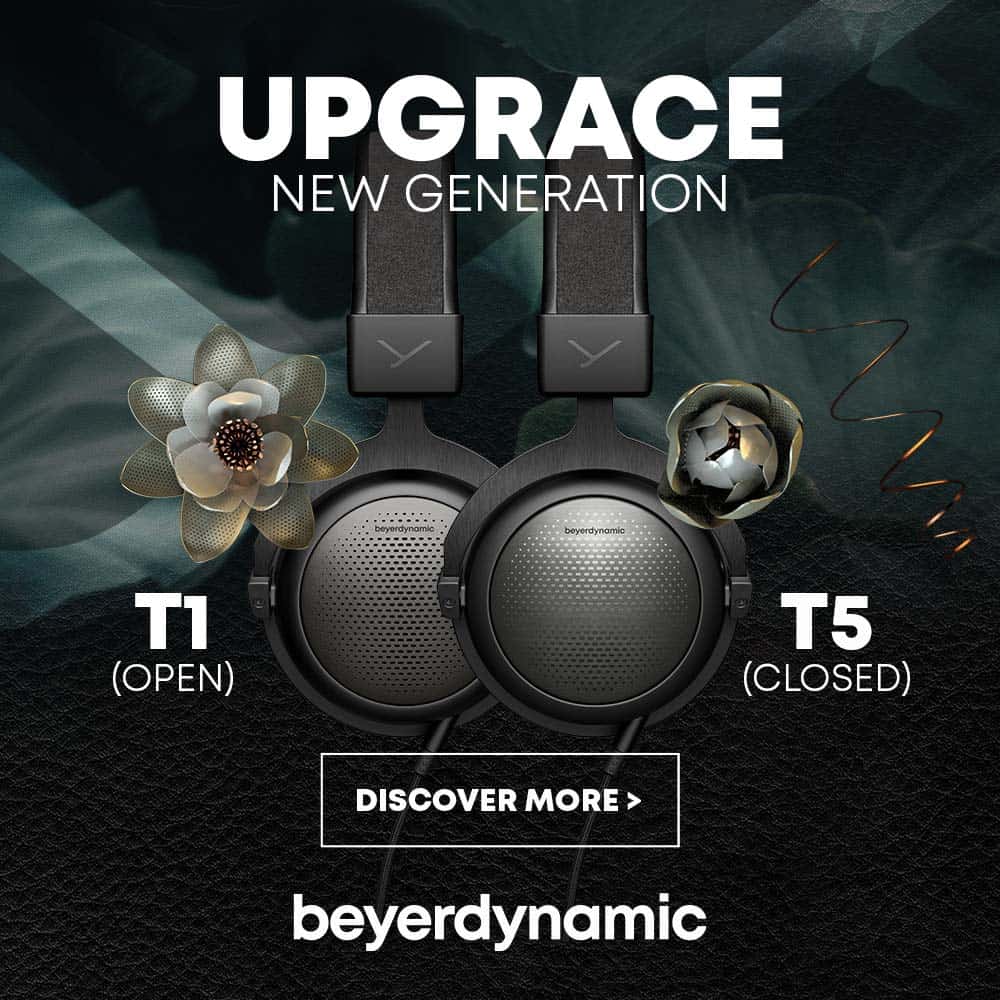There’s been a good crop of portable, Bluetooth DACs that have become popular with some audiophiles on the go. A few manufacturers have dabbled into this market, like iFi with the Go Blu and the Gryphon, and Shanling with the UP4. However, one specific model has really overtaken the market as one of the most popular options, and that’s the Fiio BTR5. When the BTR5 was released a few years ago it was a big hit, especially since it used a great companion app that housed a ton of options for customization. Now the BTR5 has been updated for 2021, and I’ve finally gotten a chance to try it out.
What You Get
- Charging cable
- back clip
- quick start guide
- USB Type-C to Type-C silicone cable
- 8-strand silver-plated copper braided USB Type-C to Lightning cable
Build
The BTR5 carries a simple, minimalistic design that’s sharp and easy to manage. It’s incredibly small and sits great in your pocket, with its LED screen displaying your current streaming CODEC, volume, and battery life. You have your 2.5mm and 3.5mm headphones jacks at the top, with a USB-type C connector on the bottom. On the right side, you have your volume control, play/pause button that also acts to activate pairing mode, and your power button. I barely used these controls, as I didn’t find the need to touch the device itself at all while listening. I spent more time using the app and the iPhone OS to control most of the BTR5’s many features, which is how Fiio wants you to use it. Besides, the device itself is a big fingerprint magnet, and I preferred to really not touch its surface as much as I could.
Design
Inside of the BTR5 is a high-performance ES9219C DAC with an XMOS XUF208 USB chip that can support up to 384kHz/native DSD256. For its Bluetooth capabilities, the BTR5 uses a Qualcomm CSR8675 chipset that is able to run 24-bit audio over LDAC. It also supports AAC/SBC/aptX/ aptX Low Latency/aptX HD CODECS over Bluetooth 5.0. This system has been upgraded to improve the signal-to-noise ratio while lowering power consumption. You’ll also be able to use the BTR5 as an MQA decoder depending on which service you’re using. This feature can also only be used when the BTR5 is plugged into your source like a USB dongle.
I used the BTR5 as a lightning dongle quite a bit, as one of the 2021 editions’ strongest improvements is its ability to automatically recognize USB input without having to use the app. In terms of battery life, Fiio advertises a total of 9 hours of playtime, but I felt the battery drained a lot faster than that. Even then, I was still able to use the BTR5 for 7-8 hours with no issues at all.
Sound Quality
Due to the BTR5’s wealth of options and controls, the sound experience can have a broad range of character. My experience was formed mainly by the IEMs I choose to use the device with. Throughout my testing, I listened to the BTR5 with the Moondrop Aria, Ikko OH10 Obsidian, and the Kinera Baldr, all through the standard 3.5mm headphone jack and 2.5mm with the Baldr. Overall, the BTR5 will give your headphones or IEMs a great sound over wireless and an even better sound wired, which I spent a good amount of time listening to with Fiio’s LT-LT2 OTG cable to my iPhone. Here I mostly listened to hi-res Apple Music tracks, while I mostly stuck to AAC Spotify over Bluetooth.
Although the technical aspects of the wired connection have some noticeable effect on the sound signature, I didn’t find it detrimental to the sonic fidelity of the BTR5, especially if you have access to LDAC. Standard Bluetooth suits the device well, giving you little issue when it comes to clarity. However, I did get a stronger sense of spaciousness in wired mode, as it showcased the imaging in a more defined manner. More about that soon. So, you really can’t go wrong either way as the difference isn’t as striking as other DACs might be, but wired mode still gives you some nice goodies if you’re paying attention.
Soundstage
I mentioned how spatial imaging was noticeably improved over wired mode, and although that’s true, the BTR5 still sustains a good soundstage over Bluetooth as well. One of the BTR5’s strongest attributes is the way it communicates separation and accurate positioning within the sound field. An extra airy sensation can be felt, especially when I was listening to the Moondrop Aria, which gave me a floatier presentation than usual. It gave the soundstage proper distance and a significantly more outward headspace. Switching to the Baldr, the imaging felt a lot more natural, providing an unexaggerated sense of scale and layering to the sound signature. As for the OH10, I didn’t find as much difference aside from a more balanced width in the left and right channels.
Low End
One of the most consistent timbral properties of the BTR5 is its smooth and effective bass response. It’s always punchy and given good detail to exercise impact while underemphasizing its edges in order to provide a more rounded tonality. These strong textures made using the in-app EQ are not as essential depending on which headphones/IEMs you’re using of course. I boosted the frequencies a bit at 125Hz and below, finding little difference with already bass-heavy IEMs. However, certain models like the Moondrop Aria became much warmer and gave a more impressive definition.
Mids
Midrange frequencies appear fairly simple. They emanate cleanly and with plenty of accuracy to the proper character of your tracks. It takes its time but responds consistently with most headphones, anding crispness and spaciousness to the timbre. Separation was a clean focus in the mids, providing plenty of space for the frequencies to showcase detail. With some upper-midrange focused IEMs, I found myself attenuating some of the frequencies around 1k-4k in an attempt to mitigate some of the more distracting resonances, and was successful on most occasions.
Highs
The high-end offers a good helping of detail, featuring an accentuated tonality that reserves itself enough to only give you the most easily digestible textures. I didn’t actually feel the need to play with EQ in this region, as I thought that all of the IEMs I was listening to sustained an equally dynamic timbre throughout its sound signature.
Summary
This BTR5 2021 edition adds some great upgrades to its already vast capabilities, and I have a feeling it is only going to get stronger as time goes on. As a Bluetooth adapter, it supplies you with everything you need sound wise and when it comes to personalization do to Fiio’s exquisite app. With the new Apple deluxe edition, iPhone users like myself now have a better time with the BTR5’s usability, making it now one of the best all-around devices you can buy.
| Pros | Cons |
|
The Fiio BTR5 2021 is available at Audio46.
Compare the ranking of various headphones, earbuds and in-ear monitors using our tools.
Discuss this, and much more, over on our forum.
---MAJORHIFI may receive commissions from retail offers.


